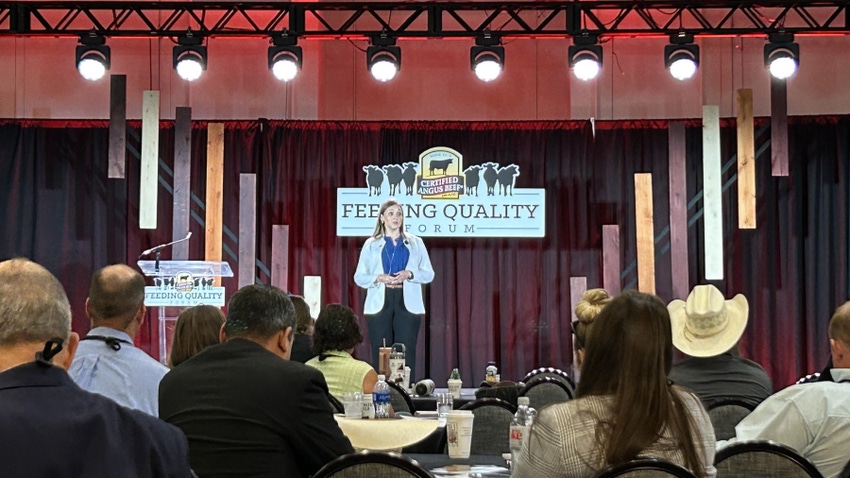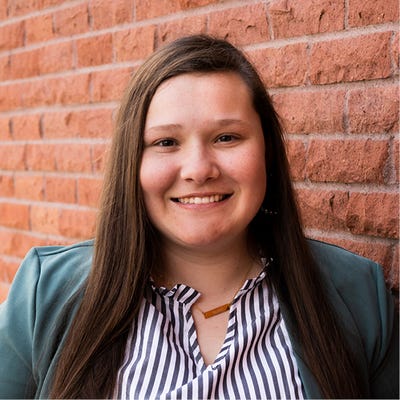
In the restaurant world, empty tables are the most expensive part of the establishment. When restaurants are unable to have a full house, clearly there is money that is yet to be made.
Weighing out the cost of whether to serve Prime or Choice beef is something that restaurants must decide while prioritizing a satisfied customer.
“That is the biggest challenge that we face when it comes to selling a Prime offering because it's a hard game to jump in and out of for buying strategy,” said Sara Scott, vice president of food service for Certified Angus Beef.
She added that Prime beef is almost a seasonal offering because restaurants plan ahead to get an order placed. Restaurant owners cannot just call the packer for Prime beef and have it the next day in their restaurant.
At the Feeding Quality Forum hosted by Certified Angus Beef in Lincoln late in the summer, packers and producers heard from Scott on what it takes to get Prime beef in front of consumers at the restaurant level. It all boils down to three determining factors — value, availability and price, she said.
Value of beef
According to 2021 National Cattleman’s Beef Association market research, consumers continue to rank taste as the most important feature of beef. This may not be a surprise, but it is also good for producers that can finish cattle to Prime in combination with good genetics.
Scott made the analogy that CAB is essentially insurance in the kitchen. Having the extra marbling and quality of CAB, it becomes more difficult to overcook the cut. “Once the consumer has a Prime steak at a restaurant, they gain the taste for it and don’t want to go back,” Scott said.
Even if the consumer does not understand the grading system or what the different grades mean, they recognize the taste and associate the flavors of a Prime steak with that restaurant. That is where the trade-off starts to make a play. If the consumers are willing to spend extra on a higher-quality cut of beef, then the restaurant can have a higher-quality offering.
Availability of Prime
With an optimistic look to restaurant demand over the next six months, the question comes into play, “Is there enough beef to supply these restaurants?” Scott said that the key to having a reliable and steady supply is the relationship between the supplier and the packer.
“We're certainly encouraging the restaurants and food-service distributors and retailers to have that partner network and don't just price-hop and price-shop around,” she said. “Because you will get burned in this sort of a supply market, and nobody wants to say they are out of a customer’s favorite steak.”
Even on the retailer end of the chain, it is important to have clear communication and planning to give the consumers the options that they want when buying beef.
“You have to be planning in order to get products here consistently and then also to implement it, so your customers are used to being in the store,” Scott explained.
Scott went on to say that these retailers are looking 12 to 15 weeks out to see what they can put in their ads and planning shelf space for beef. They take into consideration what the average consumer is buying now, and look at the trends and where they think the consumer will spend their money in the future.
Both the retailer and restaurant are key to the beef system working effectively, so having a good packer-to-distributor relationship is key to the availability of beef in the store.
Price of CAB
Scott noted that once you have an air-conditioned cab on your tractor, going back to an open-air cab is not something that a farmer would want to do. It is the same with the beef-eating experience. But with a higher-quality steak, there is a price increase that goes along with it.
To incentivize consumers to get the taste of a Prime steak, they might run specials so they will buy it again. Part of Scott’s job is to help both the retailer and the restaurant navigate through these pricing decisions.
“Today, it is much more intentional to have a discussion about how to offer a premium product,” Scott said.
She has been helping these suppliers decide how to sell a lower-tier cut that is still a high-quality offering, like CAB, and expose the consumer to this added quality.
It all comes down to the trade-offs when deciding if these suppliers will have a CAB or Prime offering in their establishment. A common theme of clear communication and planning is threaded through the three focuses of the value, availability and price of beef.
This is the third and final installment in our series of stories from the Feeding Quality Forum, hosted by CAB in Lincoln late in the summer.
About the Author(s)
You May Also Like






